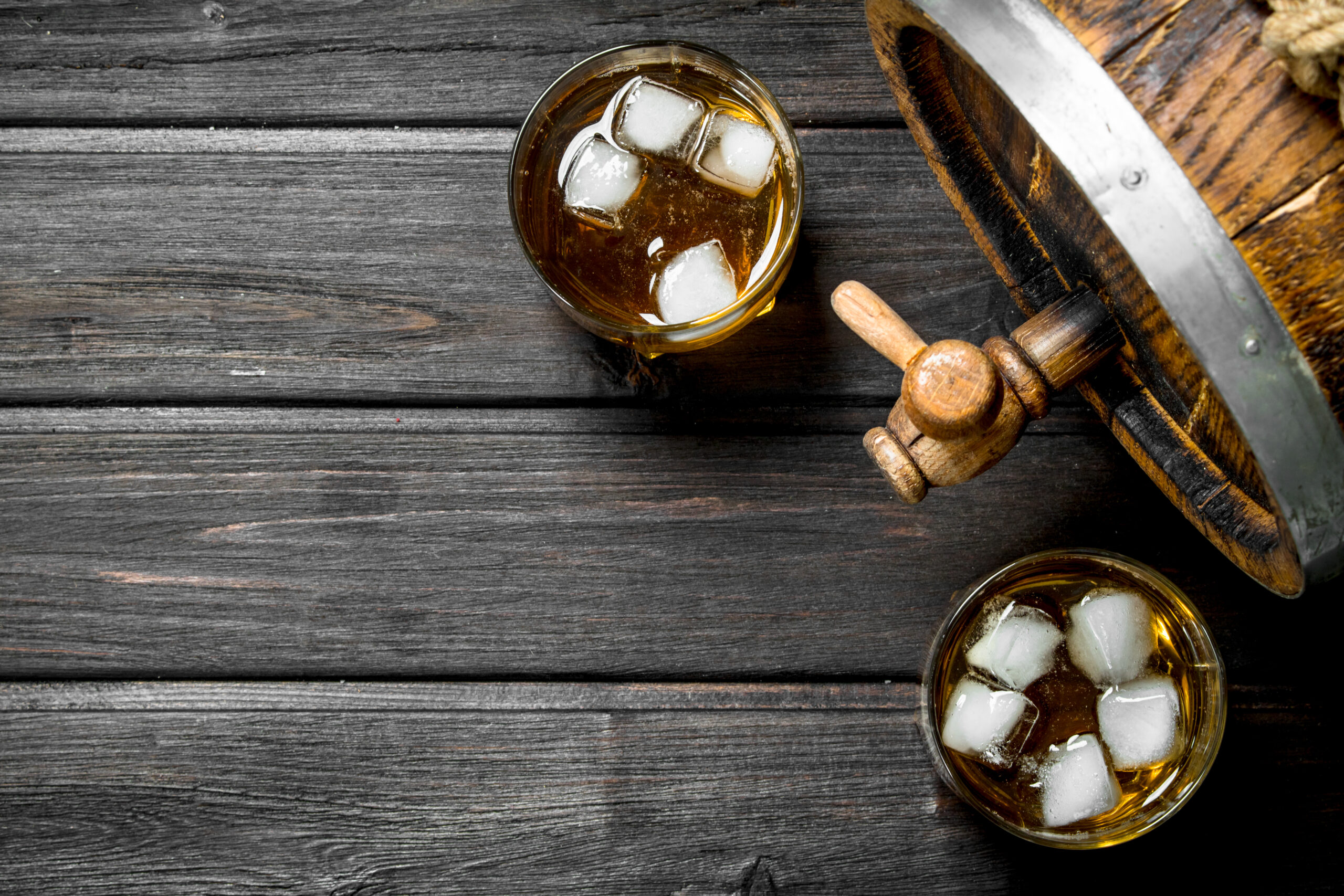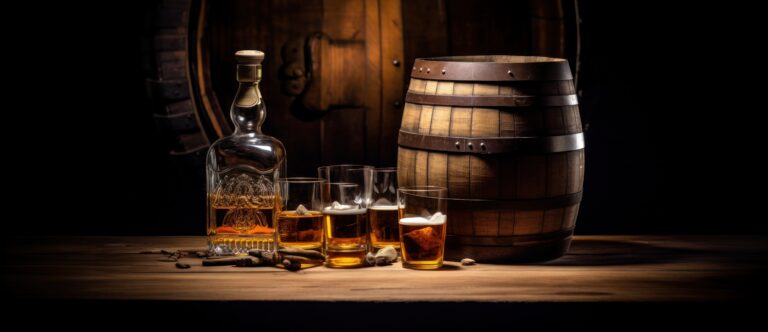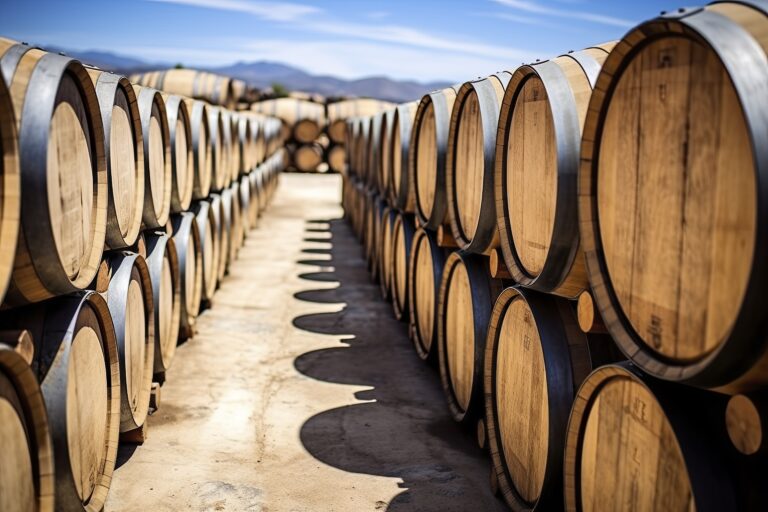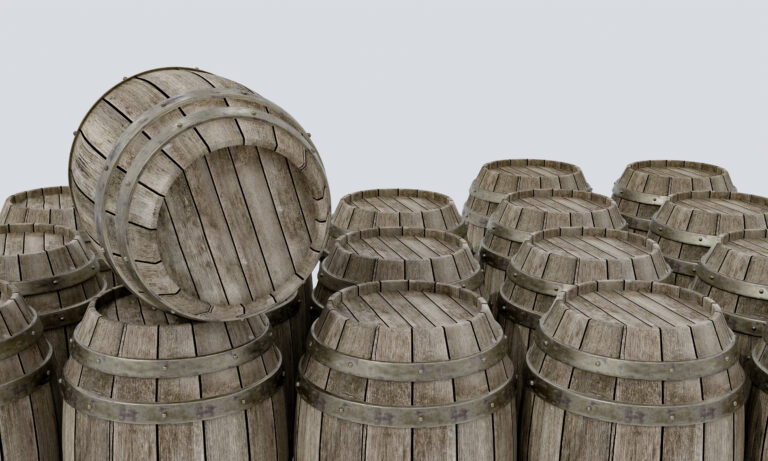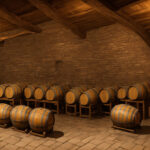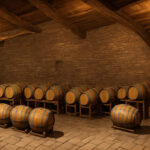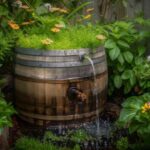Ever wonder why older whiskeys taste so intricate and delicious? Barrel aging is the magic ingredient, but what’s really happening inside those charred oak barrels? The connection between barrel age and whiskey flavor is a fascinating puzzle. As the whiskey rests in the wood, a ton of chemical reactions transform its taste, smell, and color. Tannins from the wood add notes of vanilla, caramel, and spice, while the char helps soften the whiskey. As the barrel “breathes,” the whiskey concentrates and takes on the wood’s character.
Over time, temperature changes cause the whiskey to move in and out of the wood, picking up flavor along the way. While aging might seem like a simple process, it’s anything but. Lots of things influence how a whiskey develops in the barrel, making each batch a unique snapshot of the wood, the original spirit, and the passage of time. Aging whiskey is a true art, blending science and gut feeling, tradition and innovation.
Introduction: The Intriguing Link Between Barrel Age and Whiskey Flavor
The relationship between barrel age and whiskey flavor is a tricky one. As whiskey matures in charred oak barrels, it pulls out compounds from the wood, giving it those signature aromas and tastes. But, aging a whiskey longer doesn’t automatically mean it’ll be better or more complex.
The Sweet Spot
Most whiskey lovers agree there’s a “sweet spot” for peak flavor, usually somewhere between 4 and 12 years for most whiskeys. During this time, the spirit soaks up those desirable flavors like vanilla, caramel, and spice from the wood. But after 12-15 years, those wood flavors can become too strong, overshadowing the whiskey’s original malt and grain flavors.
The Barrel’s Tale
The type of barrel matters too. Barrels that have been heavily charred or toasted have more surface area to impart flavor. Barrels previously used for other spirits, like bourbon or sherry, also leave their mark on the final flavor. Even where the barrel warehouse is located and the climate play a role in how quickly the whiskey ages and develops its complexity.
Patience is a Virtue
While older isn’t always better, extra aging can create an incredibly complex spirit. After 20-25 years, a whiskey might develop rich dried fruit flavors like raisins and prunes, nutty notes like walnuts or pecans, and warm spices. If you’re patient, an older, top-shelf whiskey can be a truly amazing experience. But be prepared to pay a premium for it.
Ultimately, a whiskey’s flavor depends on a mix of things: the type of grain or malt, the barrels used, the climate during aging, and, of course, how long it spends mellowing in the wood. Finding your own “sweet spot” is a fun adventure of tasting and learning. Cheers!
The Chemistry of Barrel Aging for Whiskey
Aging whiskey in charred oak barrels is essential for developing its unique flavor, aroma, and color. The longer a whiskey ages, the more complex it becomes. But aging isn’t just about time – it’s the chemistry inside the barrel that works the magic.
The Wood Itself
The wood itself gives the whiskey flavors like vanilla, caramel, and spice. As the whiskey soaks into the wood, these flavors are drawn out. The char or toast level of the barrel also makes a difference. More char means bolder, smokier notes. Lighter toasts lead to sweeter, more subtle flavors.
The Role of Oxygen
As whiskey is exposed to tiny amounts of oxygen in the barrel, it undergoes oxidation. This softens the spirit and reduces harsh flavors. It also makes the whiskey darker. The longer it ages, the more oxidized and mellow it becomes.
The Angel’s Share
Some of the whiskey evaporates from the barrel during aging – this is the famous “angel’s share.” This evaporation concentrates the remaining whiskey, making its flavor and aroma more intense. More age means more volume loss, but richer, more concentrated flavors.
The Art of Blending
Master distillers carefully blend aged whiskeys to achieve the perfect balance of flavors, aromas, and styles. Blending whiskeys of different ages allows them to combine the lively qualities of younger whiskeys with the depth and complexity of older ones.
The relationship between age and a whiskey’s character is a complicated one. While time is crucial, the real magic happens through the chemical interactions between the spirit and the wood. Mastering the aging process is an art, and the result is a whiskey as unique as its origin.
How Wood Changes Whiskey Over Time
The aging process is one of the most important factors influencing a whiskey’s flavor complexity. As whiskey sits in charred oak barrels, the wood gives the spirit distinctive flavors and aromas. The oak barrel plays several roles during aging.
First, the wood allows oxygen to interact with the whiskey. This softens the spirit and reduces harsh flavors. The longer a whiskey ages, the smoother it becomes.
Second, the wood absorbs and releases liquids at different rates – this is the “breathing” effect. As temperatures change during aging, the wood expands and contracts, absorbing and releasing the whiskey. This allows the spirit to take on more oak flavor over time.
Third, wood sugars and lignin break down and are imparted to the whiskey. Vanillin provides hints of vanilla, while lignin releases clove-like spices. The longer the whiskey ages, the more noticeable these flavors become.
Finally, wood tannins react to create color. As aging progresses, whiskeys take on darker amber hues. The color deepens and intensifies over years of maturation.
While aging is crucial for flavor, there’s a point of diminishing returns. After 10-30 years for most whiskeys, the spirit can become over-oaked, hiding the original whiskey character. Master distillers keep a close eye on aging stocks to bottle them at peak maturity.
In the end, a whiskey’s age isn’t a perfect indicator of quality or taste. Maturation depends on many variables – from barrel char level to warehouse conditions. However, as a general rule, longer aging leads to a whiskey with deeper, more complex flavors. Tasting different aged expressions side by side reveals a whole spectrum of flavors unlocked from the oak barrel over time.
Diminishing Returns – When More Time Isn’t Better
While barrel aging is essential for developing complexity in whiskey, there’s a point where more time in the barrel doesn’t necessarily mean a better spirit. For most whiskeys, maximum flavor is reached between 3 and 30 years, depending on the type of barrel and whiskey. After that, additional aging can start to diminish the good qualities developed in the first few years.
The barrel eventually loses its ability to impart oak flavors and aromas. The charred inner layer, which provides the oak and vanilla notes, slowly breaks down. Without that interaction, the whiskey stops gaining complexity.
The barrel allows a small amount of evaporation each year, reducing the overall volume. After many years, a large portion of the whiskey has evaporated, leaving behind a much more concentrated, often overly oaky spirit.
The whiskey can become over-oxidized from exposure to oxygen through the wood. This oxidation causes the desirable aged notes to fade and unpleasant metallic or bitter notes to develop.
Certain lighter, brighter flavors are the first to go with long aging. Floral, fruity, and spicy notes tend to fade, leaving heavier aromas of oak, nuts, and baking spices. For whiskeys meant to highlight a lighter, more vibrant side, extended barrel aging might not be ideal.
Of course, ultra-aged or “dusty” whiskeys, often 20+ years old, have become coveted collector’s items and can be very expensive. But for most casual drinking or special occasions, a whiskey aged closer to the “sweet spot” for its style will likely provide the best balance of barrel influence and spirit character. When it comes to barrel aging, more isn’t always better. Sometimes just right is perfect.
The Sweet Spot for Maximum Flavor Complexity
As whiskey ages in the barrel, complex flavors develop and intensify. However, there’s a point where more aging doesn’t improve taste and aroma. For most whiskeys, the “sweet spot” — when flavors are most vibrant yet balanced—tends to be between 3 and 7 years.
At around 3 years, whiskey picks up distinct characteristics from the barrel like vanilla, caramel, and oak. The harsh, grainy notes of new whiskey fade as pleasant aromas emerge. However, the whiskey can still taste quite fiery and one-dimensional.
Between 5 and 7 years, whiskey becomes smoother and more mellow. Additional aging allows the concentration of congeners — compounds that give whiskey its distinct aroma and taste—to build up. The result is a spirit with layers of flavor that unfold on the palate. Notes of dried fruit, nuts, and spice join the mix.
Beyond 7-10 years, whiskey risks developing an overly woody, tannic character from prolonged barrel contact. The congeners that provide fruity, floral flavors break down over time. Although the whiskey becomes very smooth, it loses the vibrant, complex notes that peaked during the “sweet spot.” Of course, some whiskeys benefit from longer aging, depending on factors like barrel type, distilling technique, and climate. But in general, maximum flavor complexity emerges in the 5 to 7 year range.
The relationship between barrel age and flavor is complex. While aging is essential for mellowing whiskey and developing character, more time in the barrel doesn’t always mean better taste. For the best experience, look for whiskeys aged within the “sweet spot” — the point when fresh, grainy notes have evolved into a symphony of aroma and taste, yet before vibrant flavors start fading into the woodwork.
Other Factors Besides Time That Impact Flavor
While barrel aging is crucial for developing complex flavors in whiskey, several other factors also play a role.
Barrel Char Level
The level of char on the inside of the barrel affects the whiskey’s flavor. A lighter char will impart more subtle oak and vanilla notes, while a heavier char produces stronger oak, spice, and caramel flavors because the whiskey absorbs more compounds from the wood. Distillers can customize the char level to achieve the flavor profile they want.
Barrel Type
Besides oak, distillers also use barrels made of other woods like maple, hickory, or cherry. Each wood contributes unique flavors. For example, maple barrels impart hints of maple syrup, while hickory provides smoky, nutty notes. Some distillers even age the same whiskey in different barrel types and then blend them.
Barrel Location
Where barrels are aged, known as the rickhouse or barrel warehouse, also affects flavor. Barrels aged on higher floors or near openings like windows develop more complex flavors due to greater temperature variations. Whiskey in barrels aged in the center of the warehouse typically has more muted, mellow flavors because of more stable temperatures.
Blending
Master distillers often blend multiple barrels of whiskey to create the flavor profile they want before bottling. They might blend barrels of different ages, char levels, or barrel types to create a harmonious, balanced whiskey with a unique taste. The art of blending requires an exceptional palate and years of experience.
While time is the most essential ingredient for barrel-aged whiskey, a variety of additional factors like barrel characteristics, aging environment, and blending techniques also play a role in developing the complex flavors found in premium spirits. Ultimately, a master distiller’s skill and patience in nurturing each barrel over long years results in a whiskey that is far more than the sum of its parts.
Older Isn’t Always Better – The Risks of Over-Aging
While aging whiskey in barrels is crucial for developing complex flavors, there’s a point where a spirit can become over-aged. As whiskey sits in the barrel, it absorbs compounds from the wood that impart aromas and tastes like vanilla, spice, and dried fruit. However, after too many years, the whiskey can take on unpleasant qualities and lose some of its original character.
Loss of Volume
When a barrel is first filled, a small amount of the spirit evaporates each year – the “angel’s share.” After many years, a substantial volume has evaporated, leaving behind a much more concentrated spirit. This can lead to a whiskey that is overly oaky and tannic.
Unpleasant Flavors
As whiskey ages, the compounds extracted from the barrel not only provide pleasant flavors but also some undesirable ones. An over-aged whiskey may develop tastes reminiscent of sawdust, bitterness, or mustiness. The original malty, grainy flavors of the new-make spirit can be lost behind the wood flavors.
Loss of Balance
A well-aged whiskey strikes a balance between the original distillate character and the flavors imparted by the barrel. When over-aged, this balance is lost, and the wood completely dominates the other flavors. The whiskey lacks complexity and tastes primarily of oak.
While older whiskey is often considered a mark of prestige and quality, age isn’t the only factor that determines how great a whiskey can be. Master distillers carefully monitor the aging process to bottle the whiskey at peak maturity when all the flavors have married harmoniously. For most whiskeys, this is usually between 10 and 25 years. However, some spirits can continue to improve for 30 years or more before becoming over-aged. Knowing when to bottle is as much art as science.
The relationship between barrel age and flavor is complex. While time in the barrel is essential for a great whiskey, more years don’t always mean better. When it comes to whiskey, older isn’t necessarily wiser. Moderation in maturation is key to achieving a balanced, complex spirit.
Finding the Right Balance for Your Palate
Finding the right balance in barrel age and flavor for you comes down to personal taste. Some prefer the robust, oaky flavors that come from longer aging, while others like brighter, fresher notes in younger whiskeys. As with many things, the sweet spot is often somewhere in the middle.
Age Isn’t Everything
While age can positively impact whiskey in many ways, it’s not the only factor that determines flavor and complexity. The type of barrel used, climate, and specific grains and yeast strains also play a significant role. Two whiskeys of the same age can taste quite different based on these other variables.
Youthful Exuberance
Younger whiskeys, around 3 to 7 years old, tend to showcase the vibrant, fruity flavors of the grains, with hints of spice from the barrel. The oak influence is more subtle, allowing the essential character of the spirit to shine through. These whiskeys are often lighter and crisper, perfect for cocktails or enjoying on the rocks.
Maturity and Oakiness
Older whiskeys, 10 years and beyond, develop rich, layered flavors from prolonged barrel aging like dried fruit, nuts, and warm baking spices. The oak becomes more prominent, imparting notes of caramel, vanilla, and sometimes cocoa or coffee. While mellower, the complex flavor profiles of mature whiskeys are best appreciated neat or with a splash of water.
Finding Your Balance
For the widest range of whiskey drinkers, a good balance of youthful spirit character and oaky maturity can be found in the 6- to 12-year mark. At this midpoint, you get a taste of both ends of the spectrum – bright, grainy notes complemented by developed oak and spice flavors, without either dominating. The sweet spot varies for everyone, though, so the only way to find your perfect balance is to try a range of different ages and styles to determine what you like best! The journey of discovery is part of the fun.
The Relationship Between Whiskey Barrel Age and Spirit Complexity
The relationship between barrel age and whiskey flavor is complex. As whiskey ages in the barrel, many chemical reactions occur that affect its aroma, taste, color, and mouthfeel. However, aging whiskey for an extended period doesn’t always mean a higher quality or more complex spirit.
Evaporation
As whiskey ages in the barrel, a small amount evaporates each year. This is known as the “angel’s share.” The liquid left behind becomes more concentrated in flavor and aroma compounds. The whiskey’s ABV (alcohol by volume) also increases slightly.
Oxidation
When whiskey is exposed to oxygen in the barrel, it reacts with various compounds to create new flavors. This mellows the spirit and reduces harsh, sharp edges. Tannins break down to create a smoother mouthfeel.
Extraction
The whiskey extracts flavor compounds from the charred oak barrel, like vanilla, caramel, and spice notes. The longer it ages, the more extraction occurs. However, after many years, the barrel has less flavor left to impart, and the whiskey can become over-oaked.
Blending
Master distillers carefully blend barreled whiskeys of different ages to create the desired flavor profile. They use both young and old whiskeys, combining the vibrant qualities of younger spirits with the mellowness of older ones.
The relationship between barrel age and whiskey complexity depends on many factors. While age certainly plays a role, it isn’t the only determining element. The specific barrel type, barrel char, climate, and blending decisions can all have a significant impact on the final spirit. So next time you sip an aged whiskey, appreciate the years of care and expertise that went into crafting such a complex distillate.
Final Thoughts
So there you have it, a quick overview of how barrel aging impacts whiskey flavor. As you can see, it’s a complex relationship that depends on many factors. While age can positively influence flavor, it really comes down to the specific barrels, environment, and base spirit. A well-aged whiskey is a beautiful thing, but age isn’t the only measure of quality or taste. The next time you pour yourself a dram, take a moment to appreciate the subtle flavors and aromas that developed during its slumber. Aged or not, whiskey is meant to be enjoyed. Sip it slowly, savor the experience, and remember that every bottle has a story to tell.
